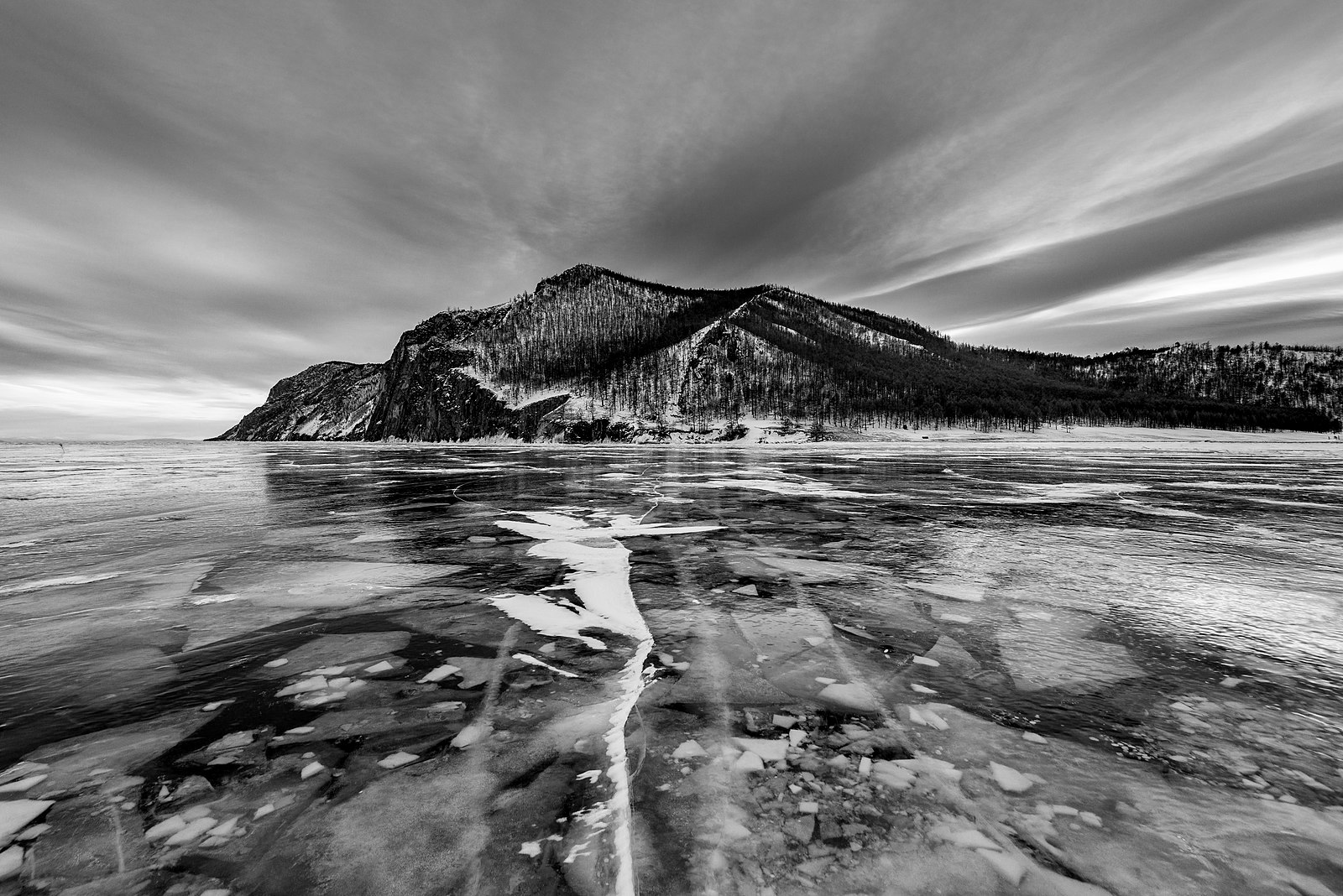Dr Harry Dadswell
The Hunt for Red October
A review of The Lost Pianos of Siberia by Sophy Roberts (Doubleday, 2020)
I was nervous when I first booked a Moscovite piano tuner. My new piano was a humble instrument: a mass-produced Soviet Red October upright that had cost me ten pounds. The seller had been in a hurry to clear his new flat of the previous owner’s belongings. As the tuner unpacked his tools and removed the veneer panels to access the strings, I expected him to look askance at the instrument.
Instead his chest swelled with pride. Pointing to the intricate components he said that everything in the
His sense of loss got me thinking. I knew nothing of the instrument’s history, except the serial number 300718 stencilled unevenly on the metal frame. This dates its production to 14 December 1977. Above the keys, the words красный октябрь inlaid in brass bear the name of the Red October factory.
Before the Revolution, Red October pianos were called Beckers, after a German piano maker Jacob Becker who opened a piano workshop in St Petersburg in 1841. He would eventually supply the Russian and Austrian emperors. The last tsar Nicholas II bought a Becker for his wife. The great composers Tchaikovsky, Rimsky-Korsakov, and Scriabin all owned Beckers too.
The factory was nationalized after the Revolution. In 1927 the company took the name Red October to commemorate the ten-year anniversary of the October Revolution. Early instruments were poor quality. The Second World War saw the factory shift production to help the front, making ammunition boxes, propellers, and skis. After the war, quality improved enough for the firm’s pianos to win international prizes. From the 1960s demand shifted to the mass production of hundreds of thousands of humble uprights for the music schools and apartments of the Soviet empire. Assembly workshops were opened in many cities. The elite Soviet conservatories continued to train concert pianists on German pianos, often requisitioned from aristocratic mansions, although they sought to show due patriotism by purchasing Soviet instruments too.
The Red October factory barely outlived the Soviet Union. Without state subsidies and the monopoly of a Soviet market, the company declared bankruptcy in 1996. Other piano factories limped on for a few more years, even turning to coffin production before meeting the same fate.
Today the Russian internet is swamped with Red Octobers, both ubiquitous and irreplaceable: the last remnants of a lost piano industry. Russia is now a country with a glut of pianos but almost no living tradition of production. The oversupply of the domestic market with old Soviet pianos, alongside foreign imports, means that there is no money to be made making more instruments.

Frozen lake Baikal near Olkhon island, 2016. (Courtesy Sergey Pesterev).
The book starts as a quest to find a piano for a friend of a friend. Roberts is a travel journalist, sent to Mongolia by the Financial Times to write a piece on the cashmere industry. She befriends an eccentric German expat. A Mongolian concert pianist he knows, Odgerel Sampilnorov, is struggling to play a Yamaha that has lost its tune in the harsh climate. He urges her: ‘We must find her one of the lost pianos of Siberia!’. From Mongolia, Siberia is just across the border, yet feels very far and exotic.
Roberts is quickly swept up by this eccentric quest. The Siberian connection feels justified when she learns that the pianist’s family were Buryats from Siberia, a Buddhist minority on the shores of lake Baikal. Her relatives fled in the 1930s to Mongolia owing to Stalinist repression after a Buryat revolt.
Bored by her work reviewing luxury hotels, Roberts begins two years of travel across Siberia. When she applies for a visa, the Russian embassy officer thinks she has lost her mind. Another applicant says she has the worst cover story he has ever heard. Mission creep takes over. Before she finds a piano in Novosibirsk she has already been to Khabarovsk, Irkutsk, Kiakhta, Tomsk, Sakhalin Island, Yekaterinburg, the Altai mountains, the Yamal Peninsula, Kolyma, Akademgorodok, Kamchatka, the Commanders, and Kuril Islands. She even heads to Harbin, China, once home to a sizable White Russian emigrant community. The FSB are suspicious. Is this a cover story for investigations in strategically sensitive territory? The FSB inadvertently save her life when they reject an application to visit Severnaya Zemlya, an uninhabited Arctic archipelago. This is fair enough she says, the equivalent of searching for pianos in outer space. The helicopter due to take her crashes.
A Mongolian friend, more focussed on the task at hand, sends her an email that could substitute this entire book:
I’m back from Siberia. I find only one grand piano. C. Bechstein — Serial number 7050. Year is 1874. From very little place. No other people has old piano.
Too bad that the piano has been forgotten in a museum, chilled by a draught and barely able to produce a sound. The extreme variations in temperature and humidity in Siberia are lethal to pianos.
Roberts’ journey involves picking through the remnants of two eras obsessed by the piano: the nineteenth century aristocratic pianomania, spurred by Liszt’s tours of Russia in the 1840s, and the Soviet project of bringing affordable pianos to all classes and regions. Some instruments served both eras: dragged from the drawing rooms of Russia’s western cities by exiles, fleeing aristocrats on trains and refugees in the Second World War, eventually beached in remote village halls and drawing rooms.
In the brutal conditions of Siberia, any truly lost pianos without owners rapidly become unplayable. The old instruments that survive are not really lost. The book is filled with the stories of these people. One pianist hangs wet cloth around her grand piano to keep the air moist enough for the instrument to keep their tune. These remote pianists cling to their instruments as precious links to civilisation and don’t want to part with them.
The best episodes of the story are about individuals for whom the piano is a precious escape from suffering. A pair of moving images in the book show Chechen separatists and Russian soldiers playing on abandoned pianos in the ruins of Grozny in 1994. In Akademgorodok, a city for scientists, Roberts finds the 1905 Muhlbach grand of Vera Lotar-Shevchenko, a late French concert pianist and survivor of the Gulag. Lotar-Shevchenko moved to the Soviet Union in 1939, following her Russian émigré husband who felt compelled to return home. Both were swiftly arrested. He disappeared; she survived the Gulag, carving a keyboard into her bunk to practice silently. Released in 1950 she walked to the nearest town to find a music school. Still in her convict’s coat she sat and played from memory for hours. The teachers and students could not believe their ears. She never returned to France nor left Siberia. The piano was all she needed. Lotar-Shevchenko’s tombstone reads ‘Life in which there is Bach is blessed’.
The Russians that she meets have a similar indomitable love of their instruments. A pianist in Tomsk has an 1896 Bechstein grand cluttered with her grandchild’s plastic toys. The piano was brought by train from Leningrad during the Second World War and sold by the owner for a bag of potatoes. In Petropavlovsk on the Kamchatka peninsula, a pianist has an 1850s Ibach grand brought from western Russia in 1936 on a three-month journey by train and sea. The former Aeroflot engineer who brings unwanted Moscow uprights to the mountain children of the Altai. He boasts ‘The world is very remote. We are at the centre.’ The eccentricity of her quest means many of her subjects let her in. Sometimes the result is digressions on the death of the Romanovs or why music is a distraction from God for lazy city people. Some are suspicious too; the piano tuners of Irkutsk are reluctant to help her find the pianos of the Decembrist aristocratic revolutionaries. When the FSB take Roberts in for questioning, her interrogator wants to talk about the novels of Somerset Maugham and Joseph Heller, not pianos.
As a travel writer, not a musician or historian, the depiction of places and people is Roberts’ forte. There isn’t much music in the book, only mentioning in passing the fascinating life of Vsevolod Zaderatsky, teacher to the murdered final heir to the throne who composed 24 Preludes and Fugues in the Gulag in 1937-8 on telegraph forms.
What saves this book from conceit is the author’s self-awareness. Roberts occasionally questions the eccentric self-indulgence of her quest. A long sea voyage to the Commander and Kuril Islands on a boat full of birdwatchers, which fails to yield a single piano, seems to push her over the edge. She quotes the philosopher Henry David Thoreau on the dangers of endless travel:
By another spring I may be a mail-carrier in Peru, or a South African planter, or a Siberian exile […] But what of all this? […] Our limbs, indeed, have room enough, but it is our souls that rust in a corner. Let us migrate interiorly without intermission.
An elderly Australian bird watcher onboard seems to rouse her again. Both have come to the edge of the world on an eccentric quest. Roberts comes to see hunting for your obsessions as a life’s work, which never truly finishes and keeps you from shrivelling up into a closed and diminished world.
The book ends with the original quest fulfilled. Roberts finds the Mongolian pianist Sampilnov a 1930s Grotrian-Steinweg with ivory keys, found in the basement of the huge Novosibirsk opera house (the biggest in Russia) that was itself taken from the town of Allenstein in East Prussia after the Second World War (now in Poland). Sampilnorov now gives recitals in Mongolia’s Orkhon valley every summer. The piano’s cantabile sound works well for Chopin and Debussy. She saves the Yamaha for Rachmaninov and Liszt. Roberts’ own dreams to travel the length and breadth of Siberia have to wait: her third year visa is rejected. A few of the most remote places remain unvisited: the islands of the Laptev Sea, Chukotka, the Putorana Plateau. She will need to rely on the written accounts of others to go there.
Ultimately it is music, not travel, that brings Roberts a sense of closure. Satisfaction in the joy the piano brings her friend. Life in which there is Bach is blessed.

